


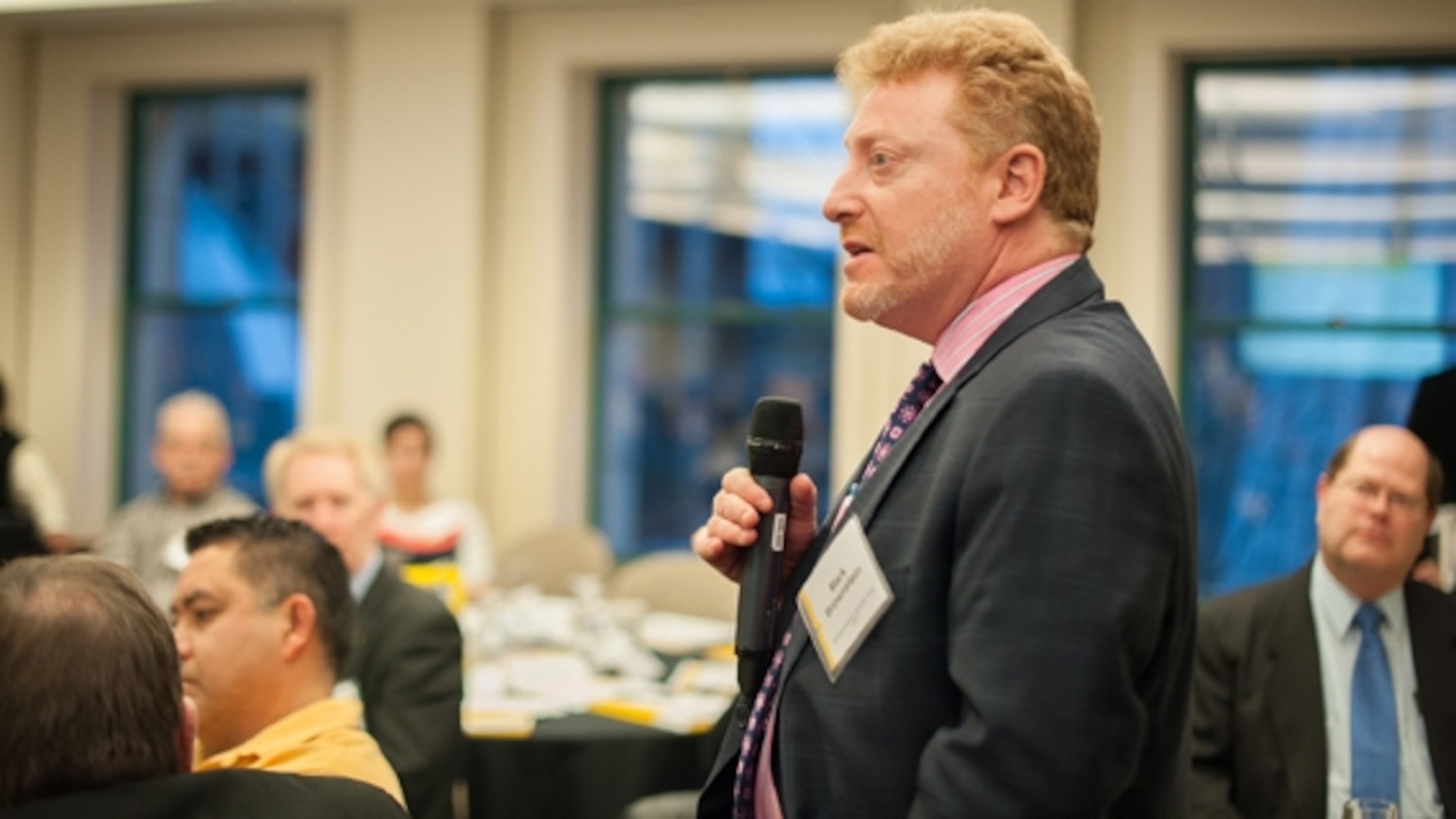

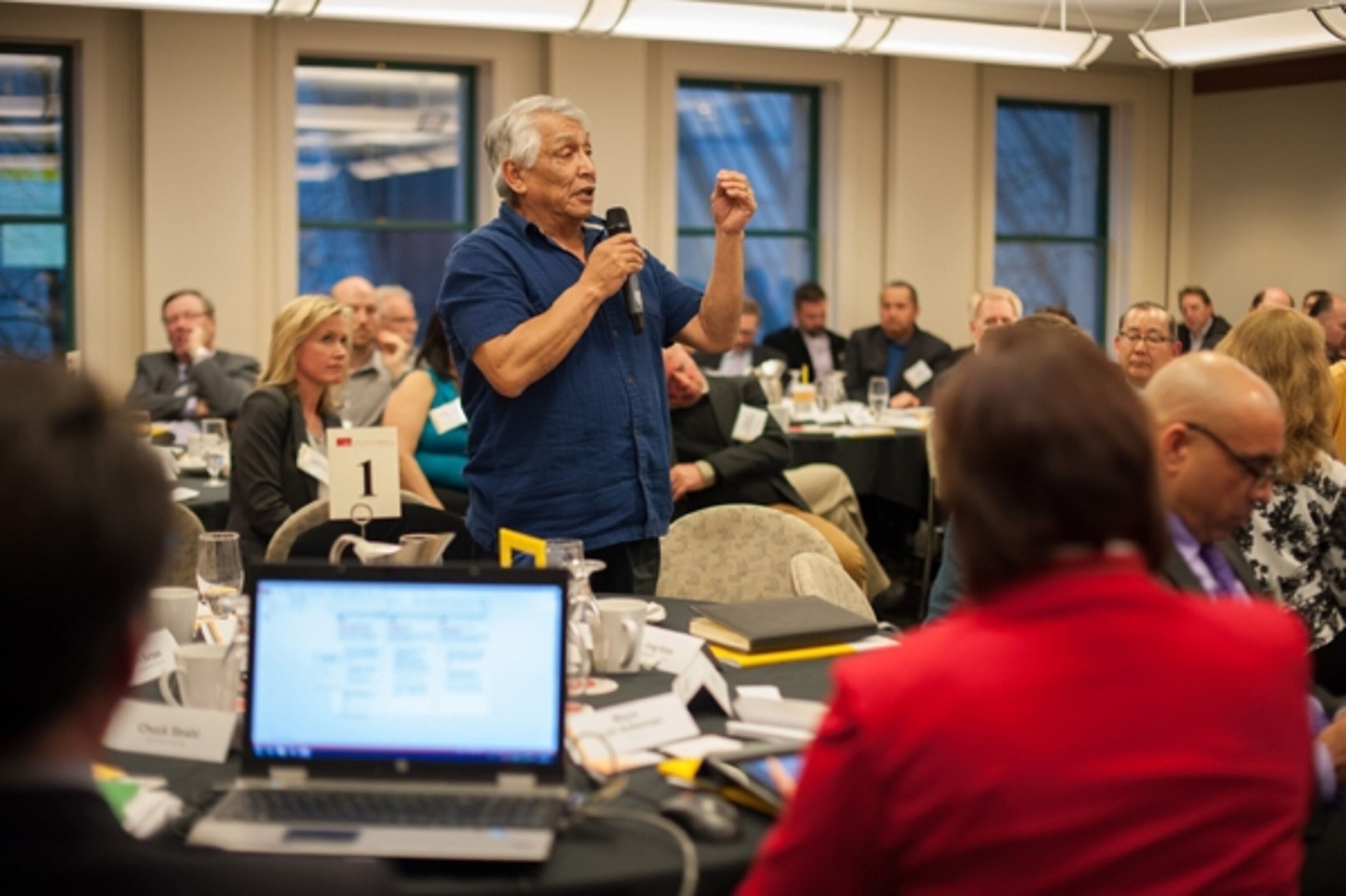
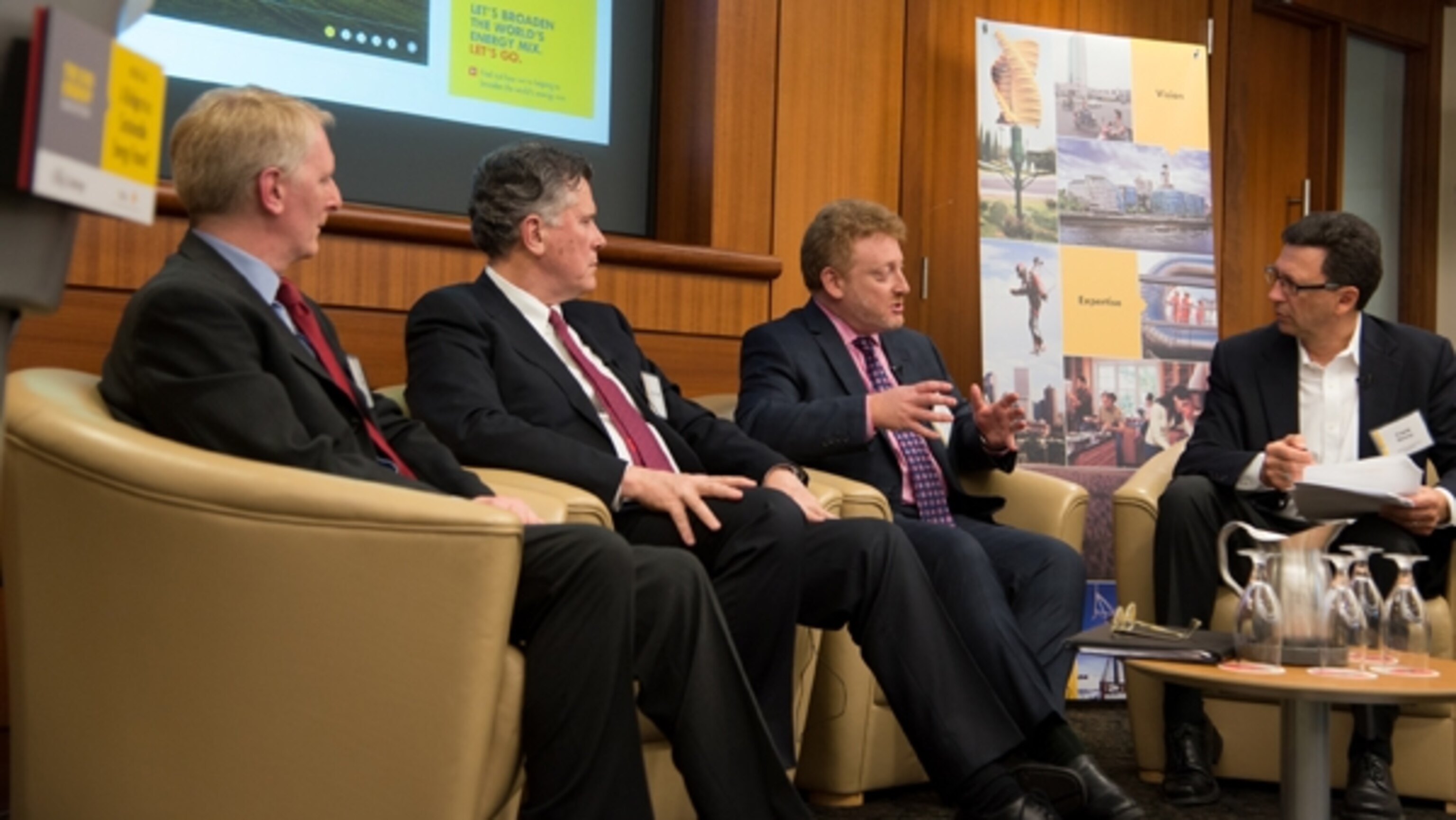

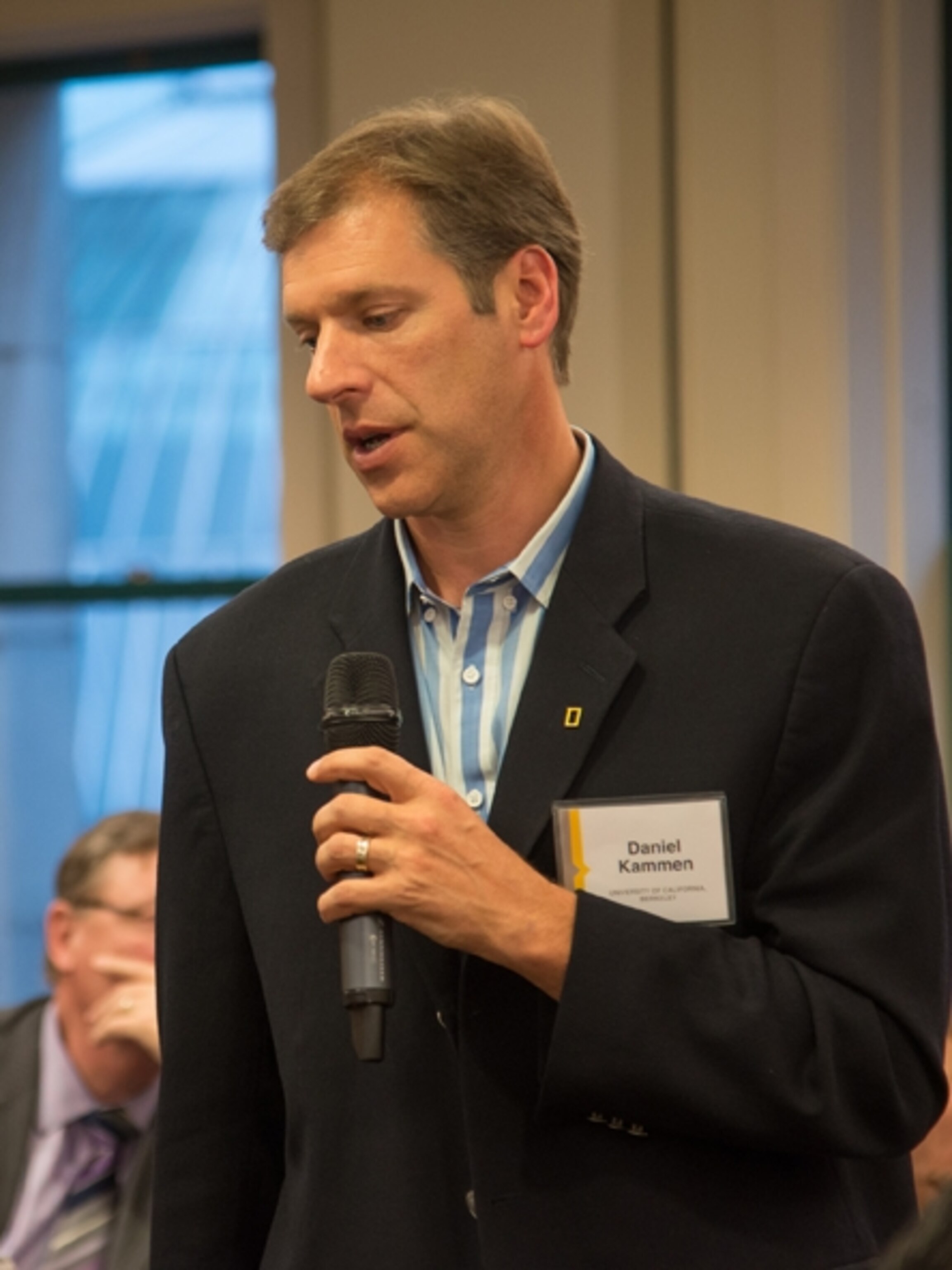
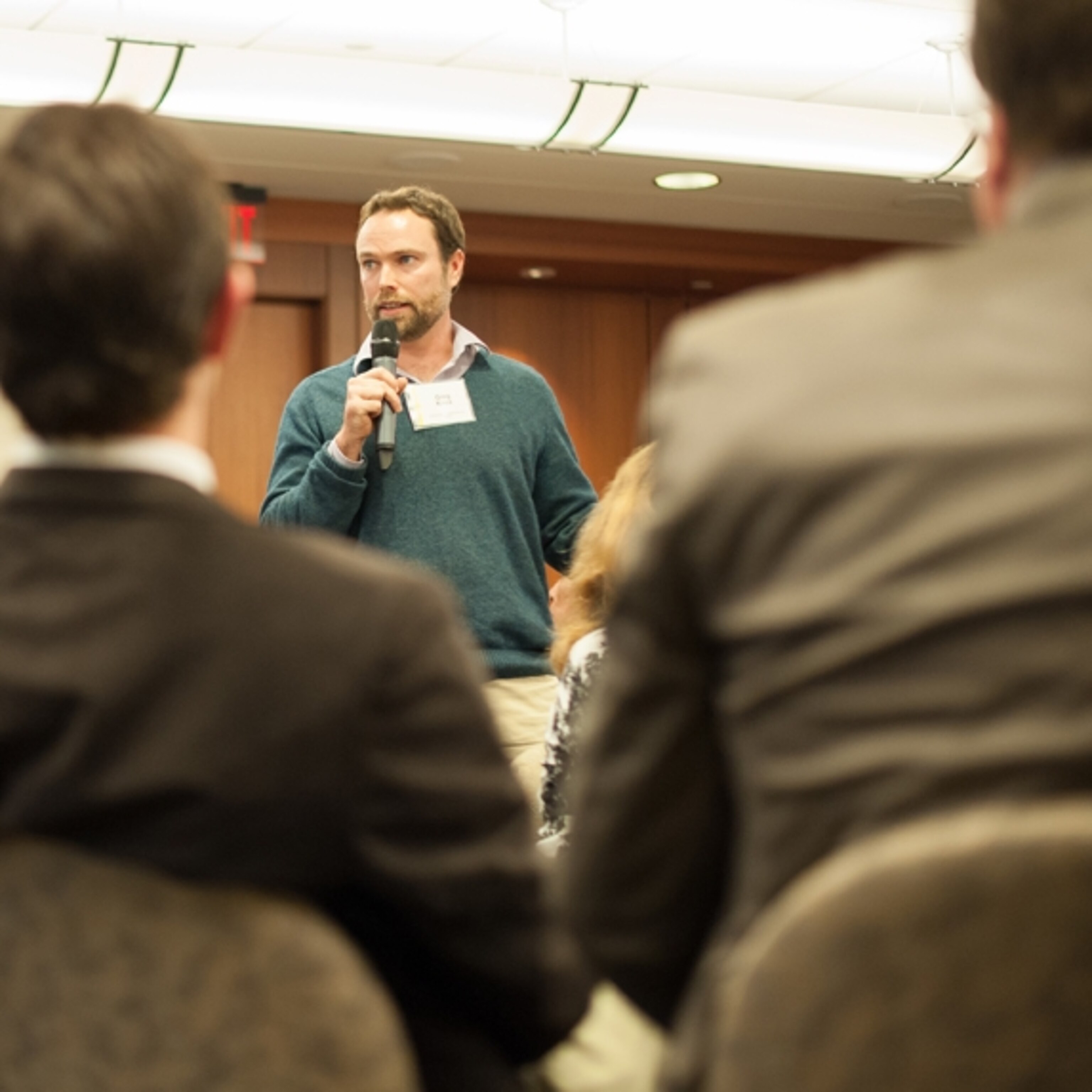

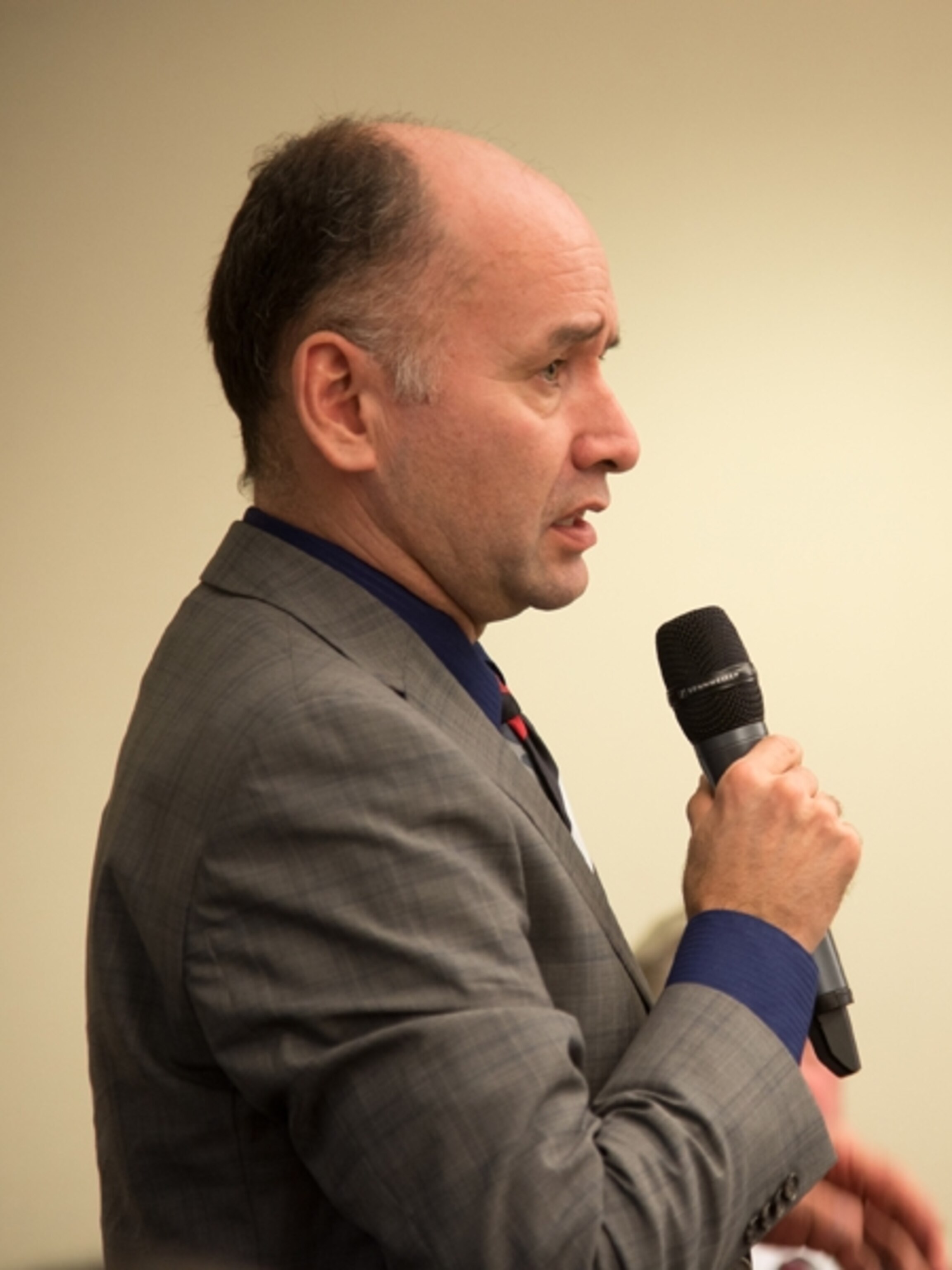

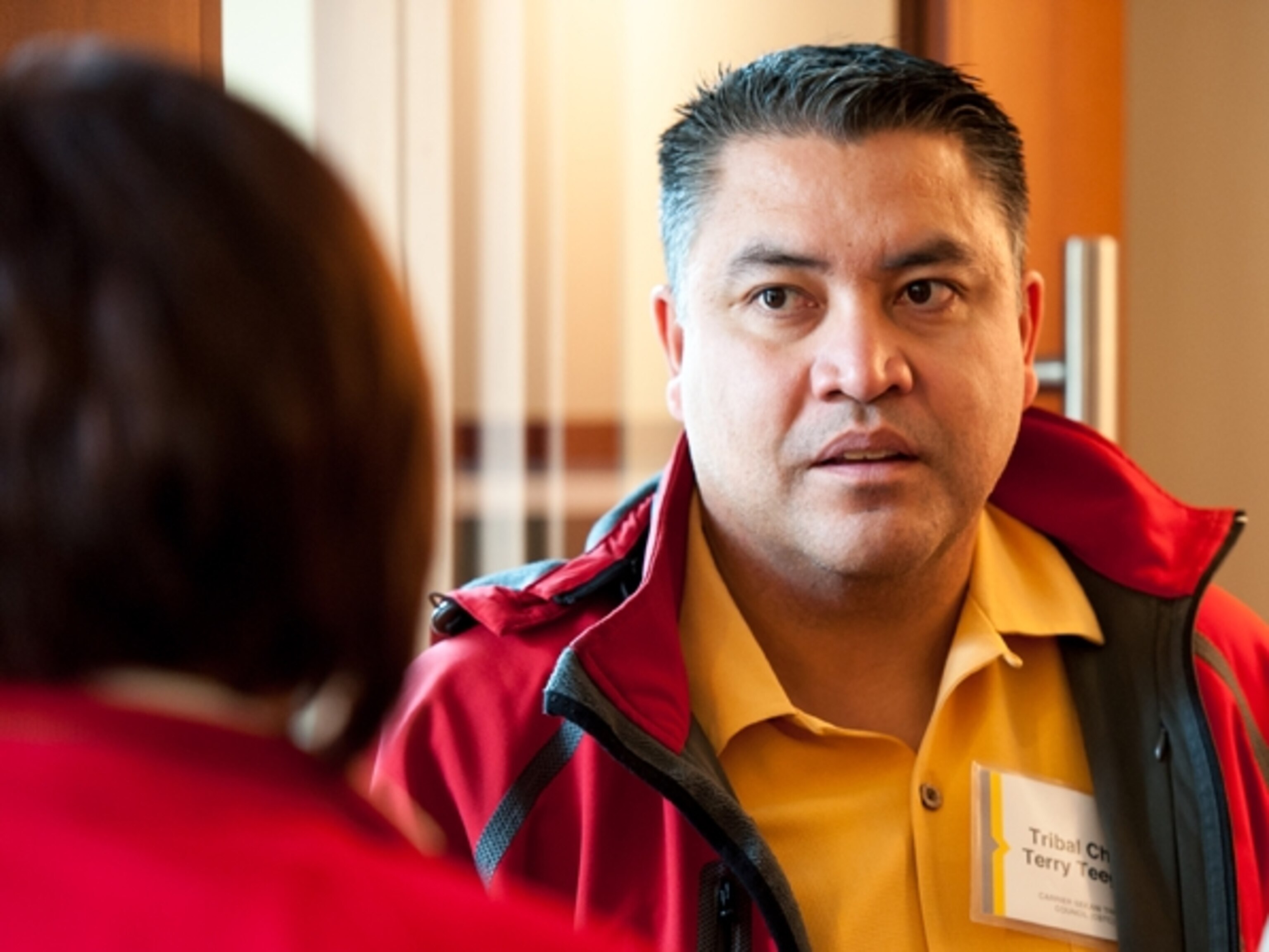
In British Columbia, Mulling the Role of Natural Gas in a Sustainable Energy Future
British Columbia finds itself at the forefront of the global debate on natural gas, and its role in the future of energy.
Some 15 energy company consortiums are vying to build massive export terminals on the Pacific coastline of Canada’s westernmost province, with an eye to shipping gas to energy-hungry Asia. British Columbia, in other words, is second only to the Gulf of Mexico in plans for establishing an international gateway for North America’s new energy riches. (See related, “North American Natural Gas Seeks Markets Overseas.”)
That’s why National Geographic chose the seaport city of Vancouver for the latest in a series of roundtable events in its Great Energy Challenge initiative, sponsored by Shell.* (You can see video from the event here.) On March 25, we convened a diverse group of stakeholders on the issue—project backers, critics, academics, government officials, and First Nations representatives—to discuss what role natural gas should play in shaping a more sustainable energy future. (Read about our previous forums, Biofuels at a Crossroads, The Arctic: Science of Change, and Powering Our Urban Future: Spotlight on Turkey.)

British Columbia, known for its lush forests and teeming rivers, now knows it is sitting on another natural resource that might define its economy in the years to come—enormous stores of shale gas in the northeast corner of the province. But British Columbia doesn’t need that all that gas to power its own electricity; it already has plenty of low-cost, emissions-free hydropower. That’s why the energy industry is looking to export the gas to eager markets on the other side of the Pacific Ocean. It’s a major Canadian energy and transport story that has been largely overlooked in the media’s singular focus on the oil sands of neighboring Alberta, and the controversy over its pipeline routes. (See related, “3 Factors Shape Obama’s Decision on Keystone XL Pipeline.”)

If British Columbia’s natural gas hits the global market and replaces some of the coal that is now powering Asia’s rapid economic development, it could help to curb the world’s current upward trajectory of greenhouse gas emissions, because natural gas produces electricity with half the carbon emissions of coal. (See related, “Can Coal Ever Be Clean?“) But questions abound over the local environmental impact and the emissions of developing the shale gas, pipeline, and shipping infrastructure to liquefy the natural gas and send it overseas as LNG (liquefied natural gas). (See related, “Green Fracking? 5 Technologies for Cleaner Shale Energy.”) And will LNG replace coal, or will it merely add to the fossil-fuel burden in the atmosphere by delaying or crowding out carbon-free renewable energy?
Here is a sample of the viewpoints shared at the forum:

Paul Jeakins, commissioner and chief executive officer of British Columbia Oil and Gas Commission: “The goal in British Columbia is to be best in class, to be the safest. When we’re talking about greenhouse gases or air quality, something that the commission has done is we’ve gone out and bought fairly expensive equipment to try to monitor that. We’ve got the legislation in place . . . B.C. is new to the global stage with LNG. We have that space right now to have that conversation with the communities. So for us, whether it’s First Nations, the local communities… we’ve got a couple of years to have that conversation. So government is very much focused on what that should look like . . . We’re trying to pull together all of the data . . . whether it’s for caribou or water quality. . . noise . . . dust.
[The hardest part] is trying to get all of the information into a small room and saying here’s all the maps, here’s what we think is going to happen, here’s where the caribou are, here’s where the wolves are and here’s where the water is . . . It’s a lot of information.”
Mark Brownstein, associate vice president and chief counsel, Environmental Defense Fund’s U.S. Climate and Energy Program:
“We [have seen] a real difference in terms of U.S. CO2 emissions as a result of [natural gas.] But we can’t lose sight of the fact that that remarkable progress has come at the expense of the safety and security of communities where gas development has been taking place. So we have to think of this . . . in terms of the global impact—we want to reduce CO2 emissions and getting coal out of our energy [is] part of that—but we can’t trade one problem for another.
“We can’t lose sight of the fact that for all of the value that natural gas can play in the short- to medium-term, it’s a fossil fuel. There have been studies done that suggest that we can afford—and I use that term loosely—to use about 25 percent of our known hydrocarbon reserves before we reach the tipping point at which the climate becomes altered in a way that none of us would recognize. So that speaks to the urgency of the problem.

“The big worry inside the environmental community—and I think many Americans share this—[is] that we will lose . . . the focus on the policies that have been so successful in helping us to deploy renewable energy, and ultimately make renewable energy cheaper. It’s not by accident that solar is now competitive in some markets in the United States. We have implemented policies, the Chinese [have] implemented policies, the Europeans [have implemented] policies that help make that possible and we’re going to continue to need to do that.”
Andy Calitz, vice president of the LNG Canada project for Shell:
“Asia, to a very large degree, is in love with natural gas. It is in part because Japan and Korea are so deficient in energy in terms of natural resources, and secondly because China is in such dire need to clean up the environment. So that transition needs to happen with a sense of urgency. We really now need to do everything possible in terms of global policy [to work] on a united basis to deal with carbon and to hasten that transformation . . .(See related, “Harbin Smog Crisis Highlights China’s Coal Problem.”)
“The environmental and nongovernmental organization groups in society and also the energy companies need to absolutely put [safety in communities] foremost . . . But let’s also remind ourselves that last year, according to the World Health Organization, seven million people died as a result of environmental and air pollution, and so much of it comes from coal . . . So we need to see it at the micro level of safety of each of the wells, each of the facilities, each of the pipelines, but also at the macro level.

“The world, including Shell, will in time move . . . beyond hydrocarbons. We are talking about the rate at which that change needs to take place . . . First, what we really need to do . . . is to emulate what the U.S. has seen . . . to cut the carbon intensity of the energy that we produce. It is not possible [to do that with renewables] immediately. World society will react against it . . . because of cost. In Shell’s mind, the most viable alternative is solar. Public reaction to wind . . . on a very large scale, unless it’s offshore and out of sight and out of mind, appears to be negative, regrettably. So the only option that we have as an alternative is to move into solar, and to move into gas for a period of decades. It’s a period of decades.”
Ellis Ross, chief councillor of the Haisla Nation: “If you’re going to include First Nations, include them in the economics, the impacts, the emissions—across the board. Be open and transparent about it. If you include them in it, they’re actually lobbying for you and your project. If you don’t include them, if you’re not open and transparent about it, your project is dead.

“I’ve been to China. It’s an ugly situation, but I can guarantee you, if they don’t get gas or clean energy over there, they will look at other opportunities for fuel, and it will probably be dirtier than natural gas. Right now, they’re checking out the technology to actually take the dirty coal that they’re not mining in the ground and burning it and collecting the gas . . . That’s even worse, just by looking at it. But this is the opportunity that we have there to address what they’re actually going through right now. I doubt you’re going to quench their need for energy . . . with just the supply from British Columbia It’s going to take more than that. Do we displace crude oil? I hope so. Do we displace coal? I hope so. But if you don’t [take action], they’re going to continue down that dirty fuel path.”
Frank Sesno, director of the school of media and public affairs, George Washington University, and creator/host of PlanetForward.org, a user-driven web and television project that highlights innovations in sustainability (event moderator): “The game I play with my students is [called] the Grandma game . . . Let’s say your first kid is born in 2020, and your kid lives to your Grandma’s age . . . there may be nine billion people on this planet, and we will need twice as much energy and 70 percent more food and 40 percent more water, and we’ve got urbanization, and we’ve got climate change, and how are we going to do that? (See related, “Water Demand for Energy to Double by 2035.”) And what are you going to do to get us there? And who in this room is going to get rich getting us there? I find it does [capture their imaginations], and they care—most of them care before they even get to the Grandma game.

“Stories change attitudes. Stories expand horizons. If we’re going to win this race against 2°C [global warming], if we’re going to do these complicated things that there is so much dispute and debate about, we have to tell a lot of stories, and we have to tell them fast and we have to tell them well . . . We have to tell the stories that will move this debate in a positive and forward direction.”
Kim Baird, founder and owner, Kim Baird Strategic Consulting: “From a First Nations/indigenous perspective, where a lot of the extraction and transportation will be crossing the territories, there was a lot of consensus about the need for more information for everyone involved and the need for dialogue from a global public policy perspective along with the technical and environmental review of the costs of the impacts.”

Terry Teegee, tribal chief, Carrier Sekani Tribal Council (CSTC): “We’re left with the legacy of these projects. There’s a cumulative impact of these projects, so how does that affect our people? . . . From a Western perspective, sure, there’s money and there’s all these things that we need when we live in this lifestyle that we currently do, but for our people, we’re paying the cost of these benefits and it’s costing the way we live and our people and our land and the animals that are on it.”
Daniel Kammen, professor and founding director of the Renewable and Appropriate Energy Laboratory, University of California Berkeley, noted that California and British Columbia are the two places on the North American West Coast that have placed a price on carbon. (See related, “California Tackles Climate Change, But Will Others Follow?” and “British Columbia Rethinks Its Pioneering Carbon Tax.”)
“One of the concerns is that natural gas is cleaner than the average mix in some places, and dirtier in others around the country,” he said. “[Whether] natural gas gives you a benefit varies based on where you are. One of the issues is that if we’re going to achieve deep decarbonization, we’re going to have to look at projects that involve gas that financially and equality-wise pay off much more quicker than projects in the past. We have [36] years between now and 2050, so that puts a whole new economic spin on big projects, big development than we’ve seen in the past. And if we’re really going to hold true at all to the [Intergovernmental Panel on Climate Change] targets, that means a whole new calculus for projects. And some natural gas projects that look good on paper wouldn’t look good if you used that lens, and that’s really one of the big challenges coming our way.

“One of the things . . . brought up in the initial comments was if we don’t measure it, we’re not going to do a very good job in assessing it. So carbon pricing is something that I thought would come up a little more often, not as the be all and end all, but as one component of the strategy that begins to eventually look at what are the costs of everything: Do we send natural gas to Asia? Do we use it locally? Do we value fishing rights? Do we value local air quality? And if we’re not going to start to put a price on some of these things, we keep this story local, as opposed to getting to that global picture.”
David Layzell, professor and director, Canadian Energy Systems Analysis Research (CESAR) initiative, University of Calgary: “The increase of natural gas in Asian markets can encourage flexibility and moving away from coal, and that [is] positive. But a concern on the other side was spending money on lots of infrastructure, are you really going to abandon that infrastructure in the future? And obviously, [does it] lock you into a long-term reliance on natural gas? So we have to think about that. Some of the discussion [centered] around the impact of adding natural gas into Asian markets. Is it going to be just additive, or is it actually going to displace coal? How much of a responsibility was that for British Columbia, and how much was that something out of our control?
“On the natural gas and the environment piece, [there was] a recognition that we needed to have some real regulations, for example on the possibility of electrifying compressors, electrical drive technologies using green- or zero-carbon energy . . . flaring bans. Competition between companies should be based on environmental performance, not just economics. We need to reward the good players. We should probably be looking at things like requiring [carbon capture and storage] on a high-CO2 gas coming out. And there was a final discussion where we looked at needing a post-natural-gas plan. How are we going to address what happens after natural gas runs out? Are we going to go back to coal? There was a real concern about that.”

Lori Ackerman, mayor of Fort St. John, British Columbia: “[There are] 350 billion tons of carbon left as [our] budget. At current use levels of 10 billion per year, we’re game over in 35 years. So the global [natural gas] supply of 200 years is irrelevant if we don’t address emissions. Sequestration. therefore, has to be part of the discussion, [as does] the role of technology.
“A case example is forestry policies in British Columbia . . . A couple of decades ago, this province was being trashed for our forestry practices. And this province put our shoulders back and our chin up and we said, ‘No, we can be the best jurisdiction globally for forestry practices.’ And we moved forward in that direction, and we have done it, and we can do the same thing for this resource. It may take the technology and it may take investment in technology but we will be able to do it.”
Greg Knox, executive director of Skeena Conservation Trust: “I think that we do need some sort of leadership at a North American scale because if natural gas is going to be a bridge to a sustainable energy future, then we have to use it domestically within North America. Because if we’re going to liquefy and ship it over to Asia, we’re losing all the benefits of lower carbon emissions because of the huge emissions required for liquefaction and for transportation and regasification. There’s no way we can use natural gas as a bridge to sustainable energy in the future if we’re going to liquefy massive amounts and send it to Asia . . . I think it’s better to transition North American coal generation to natural gas as fast as we can, and I think it’s better [for Asia] to use [its own] domestic natural gas supplies to get . . . off of coal. If you want to liquefy it and then ship it, then you’re losing all those . . . carbon emission benefits.”
Matt Horne, the Pembina Institute’s associate regional director for British Columbia: “I agree with the need for First Nations and industry leadership on this, and I would also point to the role of the provincial government in showing more leadership on this. I think there are a host of really difficult conversations and trade-offs around LNG and gas in general, whether it’s upstream around methane emissions or cumulative impacts or what does this look like in a global context? I think there are a number of opportunities where the provincial government in British Columbia could be doing more to invite those conversations and bring those perspectives into the decision making process. To date, that hasn’t really been happening to a great degree.”

Robert Dennis, natural resource department head, lead negotiator, Wet’suwet’en First Nation: “The way I look at it is if you treat the First Nations fairly and compensate them fairly for any impacts or any infringement, I believe you’ll have them on board. But if industry and government don’t do that, that could be the thing that holds things up. So what I’d like to say is that the day of just putting something on the table based on the population of a community is not a fair and reasonable negotiation, because you’re already predetermining what a nation should get and you’re not even considering what the impact on their land may be. There are court cases in British Columbia that said you must provide compensation based on the level of infringement. I don’t think the gas industry has entered into that type of dialogue yet with any of the First Nations, at least not in a meaningful way.”
Greg Halseth, professor, University of Northern British Columbia:
“One of the great challenges for communities is that they are not the ones who will decide if a project happens, but they will be the ones who have to manage if the project goes ahead. Even if the project does not go ahead, they’ll have to manage it . . . I think one of the key [things] missing [is] local capacity for dialogue and planning. To know where one might move to lever an opportunity to recreate the critical infrastructure—social, economic, cultural and environmental—of your community is a huge challenge. When we talk with industry, they often tell us, “Well, it takes us up to a decade to plan a significant project. Are the communities working for a decade to plan for their future with us?” And they don’t have the capacity to do that. So capacity to plan, we are finding, is a absolutely critical piece, because communities are not going to be the ones who pull the trigger on whether this happens, but they will be the locale where the activities occur.”
* Shell, a partner in one of the gas export projects, is sponsor of National Geographic’s Great Energy Challenge initiative. National Geographic maintains autonomy over editorial content.
Rick Etkin
You May Also Like
Go Further
Animals
- How can we protect grizzlies from their biggest threat—trains?How can we protect grizzlies from their biggest threat—trains?
- This ‘saber-toothed’ salmon wasn’t quite what we thoughtThis ‘saber-toothed’ salmon wasn’t quite what we thought
- Why this rhino-zebra friendship makes perfect senseWhy this rhino-zebra friendship makes perfect sense
- When did bioluminescence evolve? It’s older than we thought.When did bioluminescence evolve? It’s older than we thought.
- Soy, skim … spider. Are any of these technically milk?Soy, skim … spider. Are any of these technically milk?
Environment
- Are the Great Lakes the key to solving America’s emissions conundrum?Are the Great Lakes the key to solving America’s emissions conundrum?
- The world’s historic sites face climate change. Can Petra lead the way?The world’s historic sites face climate change. Can Petra lead the way?
- This pristine piece of the Amazon shows nature’s resilienceThis pristine piece of the Amazon shows nature’s resilience
- Listen to 30 years of climate change transformed into haunting musicListen to 30 years of climate change transformed into haunting music
History & Culture
- Meet the original members of the tortured poets departmentMeet the original members of the tortured poets department
- Séances at the White House? Why these first ladies turned to the occultSéances at the White House? Why these first ladies turned to the occult
- Gambling is everywhere now. When is that a problem?Gambling is everywhere now. When is that a problem?
- Beauty is pain—at least it was in 17th-century SpainBeauty is pain—at least it was in 17th-century Spain
Science
- Here's how astronomers found one of the rarest phenomenons in spaceHere's how astronomers found one of the rarest phenomenons in space
- Not an extrovert or introvert? There’s a word for that.Not an extrovert or introvert? There’s a word for that.
- NASA has a plan to clean up space junk—but is going green enough?NASA has a plan to clean up space junk—but is going green enough?
- Soy, skim … spider. Are any of these technically milk?Soy, skim … spider. Are any of these technically milk?
Travel
- How to see Mexico's Baja California beyond the beachesHow to see Mexico's Baja California beyond the beaches
- Could Mexico's Chepe Express be the ultimate slow rail adventure?Could Mexico's Chepe Express be the ultimate slow rail adventure?







